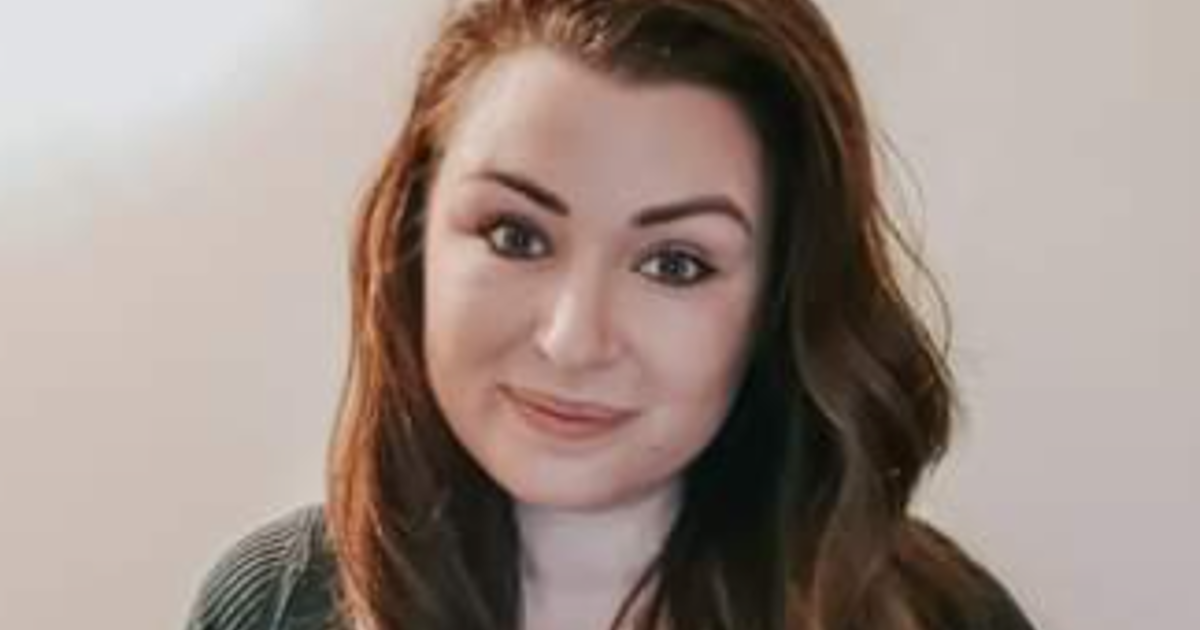Living With Chronic Myeloid Leukemia (CML)
- Melissa McNaughton, 33, of Glasgow, Scotland, learned her fatigue was not due to working too much, she had Chronic Myeloid Leukemia.
- McNaughton received her cancer diagnosis four years ago, following a routine doctor’s visit to check the iron in her blood.
- Chronic myeloid leukemia is usually diagnosed in older adults, and its symptoms can be similar to those people feel after a traumatic injury. This includes feeling rundown and tired, and weight loss. It is treatable but not curable.
Melissa McNaughton, of Glasgow, Scotland, recounted feeling nothing other than “tired” when she visited her doctor a few years ago, something she did every few months to monitor her iron levels as she’s had “quite bad health” throughout her adult life. But following this doctor’s visit, the Bridgeton resident was told to go to a hospital the following day.
Read More
McNaughton, the owner of IIVY HQ Hair Extensions, admitted she felt “down for awhile” but insisted her “inner warrior was not going to let that happen for long.” She explained, “I tried to power through. I was then taken off these tablets and moved onto another generation. I am still on them now, but I was covered from head to toe in a rash, and my bones in my legs were so sore and weak they felt like they were going to snap.”
“Every day is still a struggle and some days are worse than others. I'm getting there. Cancer will just have to get used to living with me because I am in no way going to let it beat me. I'm still smiling and not stopping,” she added.
On June 12, 2022, McNaughton, who shares her journey with the hashtag #mycmljourneydiary, took to social media to celebrate her “4-year Cancerversary.” “Today is my 4-year Cancerversary, it’s the day I dread the most. My anxiety has been all over the place this week knowing this date was coming, she wrote.
“It’s only a date. It’s also the day I turned into a warrior and needed to fight leukemia. I have realized how strong I can be. Honestly some days I don’t know how I even do it! It’s so strange but I know I have to do it.”

Despite not yet reaching her target for her bloods, her doctors say she’s doing well. “It sometimes gets me down but then I realize how lucky I am. Lucky to have these chemo drugs to keep me alive and living my best life,” she concluded.
McNaughton is speaking out about leukemia as Leukaemia Care and Leukaemia UK have created the #SpotLeukaemia campaign “to raise awareness of the symptoms ahead of Blood Cancer Awareness Month in September.”
What is Leukemia?
Leukemia is a blood cancer. Acute myeloid leukemia, or AML, starts in the bone marrow (the soft inner part of the bones), but usually quickly moves into the blood, according to the American Cancer Society, and can spread to other parts of the body like the central nervous system (brain and spinal cord).
Leukemia develops when the body produces large quantities of abnormal white blood cells. Because they're abnormal, they prevent the bone marrow from producing any other type of cell, namely red blood cells and platelets.
Dr. Nina Shah, a hematologist at the University of California San Francisco, explains blood cancers in layman's terms.
"One cell got really selfish and decided that it needed to take up all the resources of everybody else," Dr. Shah tells SurvivorNet, "and in doing so, took up space and energy from the rest of the body."
"In general having a blood cancer means that your bone marrow is not functioning correctly," she continues. "And when your bone marrow doesn't function correctly it means that you can have something happen to you like anemia. Or you can have low platelets, which makes it possible for you to bleed easily. Or your immune system is not functioning correctly."
Categories of Leukemia
Leukemia is different from other types of cancer because it is not just broken down into stages of severity but into different categories based on the cells that grow into cancer cells and how quickly those cells grow. Leukemia means that one type of white blood cell is growing out of proportion to the others and taking up the body's resources. A leukemia patient's bone marrow will become filled with these cancer cells, and that could result in anemia, abnormally low levels of platelets, and white blood cells failing to fight off infections.
Understanding The Different Types of Leukemia
There are four basic categories doctors use to identify the different types of leukemia.
- Acute leukemia grows very quickly.
- Chronic leukemia grows more slowly, over several years.
- Lymphoid leukemia grows from lymphoid cells, which produce antibodies and protect against viruses.
- Myeloid leukemia grows from myeloid cells, which is the body's first defense against bacteria.
What Is Chronic Myeloid Leukemia?
Chronic Myeloid Leukemia is caused by something called the Philadelphia chromosome, a genetic abnormality discovered in those who suffer from CML in a lab in Philadelphia.
"Having CML is like having your boiler in your house on in the summer. When it's hot, the boiler should shut off, the thermostat should work, and you shouldn't have any heat," explained Dr. Richard Stone, director, translational research, Adult Leukemia Program at Dana Farber previously told Survivor Net.
"Just like if you're not infected, your white cells should be normal, they shouldn't go up, but if the white cells are going up for no darn good reason you probably have a broken thermostat in your white cells, and that's what the Philadelphia chromosome is."
The increased understanding of how that chromosome works has led to multiple breakthroughs in the treatment of CML over the past two decades, so much so that those living with the disease are no different from someone who does not have cancer.
"If you walk in the door with CML today, you have the same natural history as a person the same age as you that doesn't have CML," noted Dr. Stone.
"In other words, if it's treated correctly, you don't die of CML, you don't need a stem cell transplant. So it's a pretty, exciting situation."
What is a Blood Cancer How is it Different?
Contributing: SurvivorNet Staff
Learn more about SurvivorNet's rigorous medical review process.


